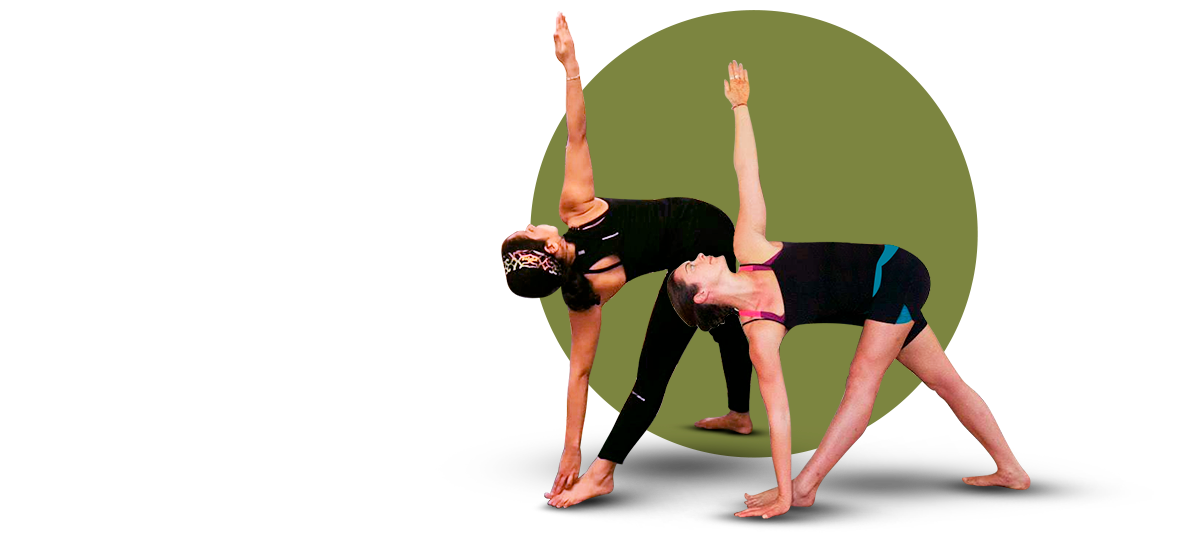Ashtanga Yoga means 8 limbs of yoga and Ashtanga Vinyasa Yoga involves synchronizing the breath with a progressive series of postures - a process producing intense internal heat and a profuse, purifying sweat that detoxifies muscles and organs. The result is improved circulation, a light and strong body, and a calm mind.
Lord Patanjali has outlined eight aspects known as ASHTANGA in Sanskrit. Acquiring and mastering these skills is very much needed for health and salvation. In the ladder of spirituality the base of the ladder is humanity and the top mount of the ladder is divinity. And Ashtanga Vinyasa Yoga helps to enrich the soul and to reach the divinity.
Yama, Niyama, Asana, Prnayama Pratyahara, Dharna, Dhyana, Samadhi
are the eight limbs of Ashtanga yoga. These limbs are divided into 3 parts
| External practice | Indicator | Internal practice |
|---|---|---|
| Yama | Prathyahara | |
| Niyama | Dharana | |
| Asana | Dhyana | |
| Pranayama | Samadhi |
Yama, Niyama, Asana, Prnayama Pratyahara, Dharna, Dhyana, Samadhi
are the eight limbs of Ashtanga yoga. These limbs are divided into 3 parts
External practice
Yama
Niyama
Asana
Pranayama
Indicator
Prathyahara
Internal practice
Dharana
Dhyana
Samadhi
Eight Limbs of Ashtanga Yoga
-
Yama (Principles or moral code)
Ahimsa - A principle of non-violence
Satya - A principle of Truthfulness
Asteya - A principle of non stealing
Brahmacharya - Continence / Celibacy
Aparigah - A principle of non-hoarding or non possessiveness
-
Niyama (Personal Disciplines)
Shoucha - Purity
Santosh - Contentment
Tapa - Endurance
Swadhyaya - Self study
Eshwar Pranidhan - Dedication
-
Asana - (Yoga Postures / positions)
A stable and comfortable posture synchronizing Body, Breath and Mind which helps to attain mental equilibrium
Asana practice is the first step for the realization of self and god. There are nearly 84 lacks Asanas as much as Jeeva rashi (creatures are in this world). About 800 years ago there were 64 thousand Asanas. About 100 years at the time of T.Krishnamacharya’s guru Sri Ram Mohan Brahmachari, there were 700 asanas. Now there are about 600 asanas. Each asanas has got it own benefits and has the capacity to cure different diseases, purify a particular pulse in our naadis, can burn a specified sin and rectify a particular diseases. All asanas can be found in text “Yoga Korunta”. Asana is also called Sthira Sukham Asanam as per Patanjala resulting in calm, comfort and happiness.In Ashtanga Vinyasa yoga, science of breathing is very important. Without knowing the breathing technique, one should not practice asana.
-
Pranayama - (Yoga Breathing)
Extension and control of breath
Prana means life force and Ayama means to extend. Practicing Pranayama helps to avoid illness in our body and to maintain mental balance with calm. It equalizes the egoism and centralizes the mind with peace.
Dharana - (Concentration on Object)
Concentration of mind on one object and its field
It is said that Desha bandha chithasya Dhavana ie. Focus chitta exactly on a particular object or point is known as desha – means place.
Experienced yogi should find that place. Dharana is the initial step of deep concentrative meditation, where the object being focused upon is held in the mind without consciousness wavering from it." -
Pratyahara - (Withdrawal of Senses)
A mental preparation to increase the power of mind
Prathyahara is a bridge between the external aspects of yoga and the internal yoga. At the stage of pratyahara, the consciousness of the individual is internalized in order that the sensations from the senses of taste, touch, sight, hearing and smell don't reach their respective centers in the brain and takes the sadhaka (practitioner) to next stages of Yoga, namely Dharana (concentration) and Dhyana (meditation), and Samadhi (mystical absorption), being the aim of all Yogic practices.
-
Dhyan - (Meditation)
With drawing mind from all external objects and Focusing it on one point and meditating on it.
In Dhyana, the meditator is not conscious of the act of meditation (i.e. is not aware that s/he is meditating) but is only aware that s/he exists (consciousness of being), and aware of the object of meditation. Derived from dhyai, means concentration on the right object. Dhyana is also interpreted as the combination of Dhi (to reflect, to things to meditate, to pray etc) and Yana (journey or vehicle) which means well steered voyage of the mind to a focused object.
Samadhi - (Salvation)
State of Super bliss, joy and merging individual consciousness in to universal consciousness. Union between Jivatman and Paramatman. Union of Shiva and Shakti in Sahasrar Chakra (the top of the head). Realizing the Bramhan (pure consciousness) or Realization of God is the ultimate achievement of Human Birth.
The ultimate aim of yoga is Samadhi or Putting together the personal soul (Jeevatama) with the supreme soul (Paramatma) It is the supreme state of wellness and happiness that every human being must endeavor to attain and divergence from it.
